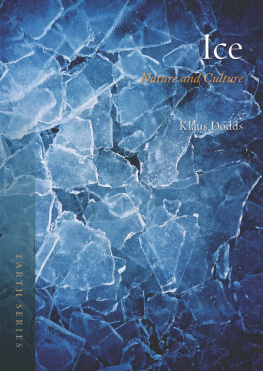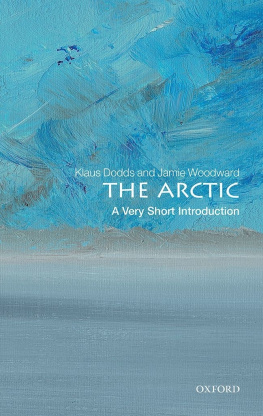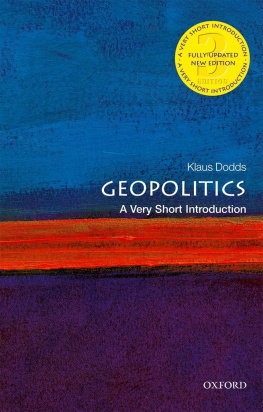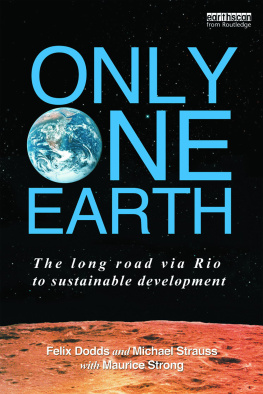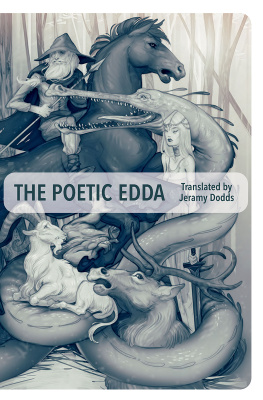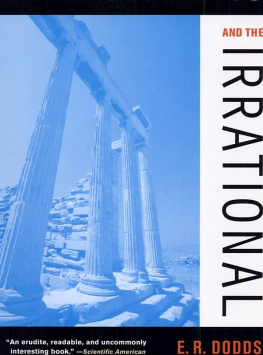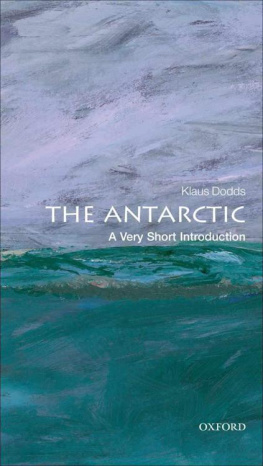ICE

The Earth series traces the historical significance and cultural history of natural phenomena. Written by experts who are passionate about their subject, titles in the series bring together science, art, literature, mythology, religion and popular culture, exploring and explaining the planet we inhabit in new and exciting ways.
Series editor: Daniel Allen
In the same series
Air Peter Adey
Cave Ralph Crane and Lisa Fletcher
Clouds Richard Hamblyn
Comets P. Andrew Karam
Desert Roslynn D. Haynes
Earthquake Andrew Robinson
Fire Stephen J. Pyne
Flood John Withington
Gold Rebecca Zorach and Michael W. Phillips Jr
Ice Klaus Dodds
Islands Stephen A. Royle
Lightning Derek M. Elsom
Meteorite Maria Golia
Moon Edgar Williams
Mountain Veronica della Dora
Rainbows Daniel MacCannell
Silver Lindsay Shen
South Pole Elizabeth Leane
Storm John Withington
Swamp Anthony Wilson
Tsunami Richard Hamblyn
Volcano James Hamilton
Water Veronica Strang
Waterfall Brian J. Hudson
Ice
Klaus Dodds
REAKTION BOOKS
To my parents
Published by Reaktion Books Ltd
Unit 32, Waterside
4448 Wharf Road
London N1 7UX, UK
www.reaktionbooks.co.uk
First published 2018
Copyright Klaus Dodds 2018
All rights reserved
No part of this publication may be reproduced, stored in a retrieval system, or transmitted, in any form or by any means, electronic, mechanical, photocopying, recording or otherwise, without the prior permission of the publishers
Page references in the Photo Acknowledgements and
Index match the printed edition of this book.
Printed and bound in China
A catalogue record for this book is available from the British Library
eISBN 9781780239477
CONTENTS

Unknown artist, Frost Fair on the Thames, with Old London Bridge in the Distance, c. 1685, oil on canvas.
Prologue
For those of us living in more temperate and tropical environments, ice comes in and out of our lives. Here today and gone tomorrow. Ephemeral in nature. Go back in time, however, and the experiences of ice are quite different. In 1814, Londoners enjoyed for the last time an impromptu Frost Fair, a legacy of the five hundred years of cooler weather labelled Europes Little Ice Age. The Times reported on 2 February 1814, in some parts the ice was several feet thick, while in others it was dangerous to venture upon. Enterprising watermen led the revellers back and forth across frozen water, as they enjoyed games, feasting and drinking. It was not the first such fair, as others had occurred in the seventeenth century. The frigid winter of 19623 ushered in the refreezing of the Thames and the accumulation of sea ice off the eastern British coastline. But it did not match the frolics of 1814.
While ice can and does melt and disappear, it leaves an indelible mark on things it comes into contact with. So making sense of ice and snow means being attentive to multiple temporalities and spaces. The North American continent was bequeathed with a set of Great Lakes because of it and they remain in place regardless of whether those waters are frozen or not. The iconic Yosemite Valley is probably one of the most prominent glaciated landscapes. Its legendary El Capitan rock has an elevation of some 2,300 m (7,500 ft). This spectacular feature owes its existence entirely to past glaciation. The ice made its mark on weaker rock but was forced to work its way around the comparatively ice-resistant granite core. Much admired by tourists, its distinctive and rugged topography created an inviting challenge to generations of climbers and later BASE jumpers.

El Capitan, Yosemite National Park, California, United States.
The United Kingdoms landscapes, including its highest mountains Ben Nevis and Snowdon and glaciated valleys in the Lake District National Park, owe their existence to ice and snow falling, taking up residence, moving and melting. As Nan Shepherd notes in her literary masterpiece, The Living Mountain: A Celebration of the Cairngorm Mountains of Scotland, we are surrounded by the elementals the elemental power of ice, snow and water coming into contact with rock and sediment. U-shaped valleys, fjords, mountain ridges and striated surfaces on rock surfaces all offer testimony to that erosive power. Ice abrades, plucks, carries and deposits rock, water, soil, fauna and flora elsewhere.
Our relationship with ice
We have an ambivalent relationship with ice and snow. The mathematician Johannes Kepler marvelled at the snowflakes perfect six-cornered symmetry and in the early seventeenth century contributed to modern understandings of the structure of crystals. The nineteenth-century American poet Henry Wadsworth Longfellow wrote of the beauty of the falling snowflake and contributed to a Romantic sensibility, which took pleasure in the intrinsic beauty of ice:
Out of the bosom of the Air,
Out of the cloud-folds of her garments shaken,
Over the woodlands brown and bare,
Over the harvest-fields forsaken,
Silent, and soft, and slow
Descends the snow.

Glaciated valley in Borrowdale, Lake District National Park, Cumbria.
We have a rich legacy of maps and charts that offer insights into how our ancestors envisaged those frigid zones. And we have a litany of written and visual accounts of firsthand encounters with natures ice. As a young medical doctor, later novelist of crime, Arthur Conan Doyle wrote about his experiences of the Arctic while on board a whaler. But he also penned a fictional account entitled The Captain of the Pole-Star (1833), which describes how the captains vessel goes mad and eventually walks to his death over the sea ice. In Conan Doyles literary imagination, ice is where white European men simply go mad.

| The physical hexagonal structure of snowflakes. |
Subterranean map of the Antarctic continent showing East and West Antarctica. | 
|
Nowadays, scientific advances involving ice cores and satellite mapping mean that we can engage with ice in very different ways. Modern ice maps are far removed from their ancient Greek and European Renaissance counterparts, tracing as they do underlying geological structure and surface contours. They add height and depth and bring a distinctly volumetric appreciation of ice and snow. It is perfectly possible to spend an entire career looking at and listening to ice without ever having to experience it directly.

